Fanny Gicquel & Alice Delanghe
*A residency that shifts the perspective
in an isolated territory battered by winds and swells.
Stagadon Le continent
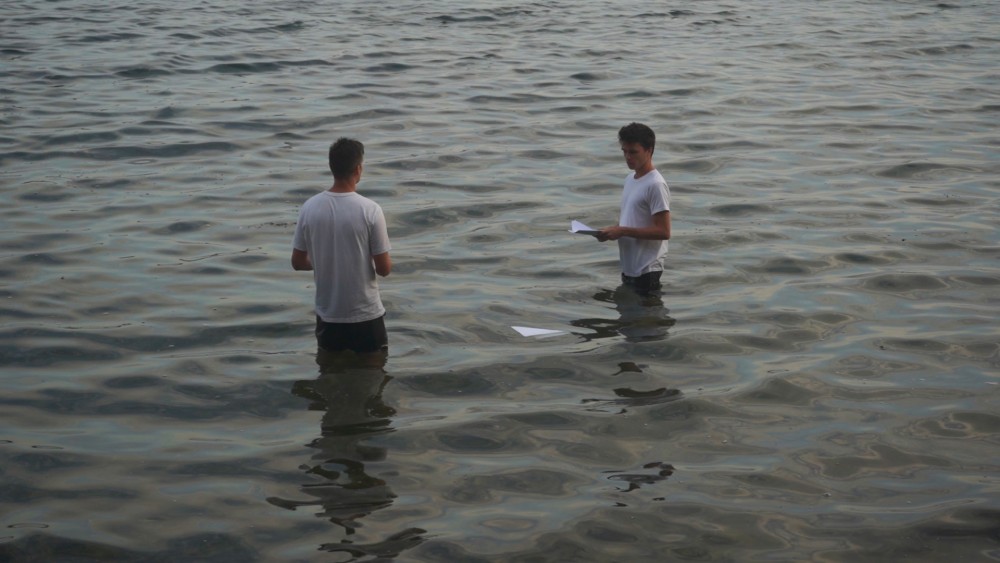
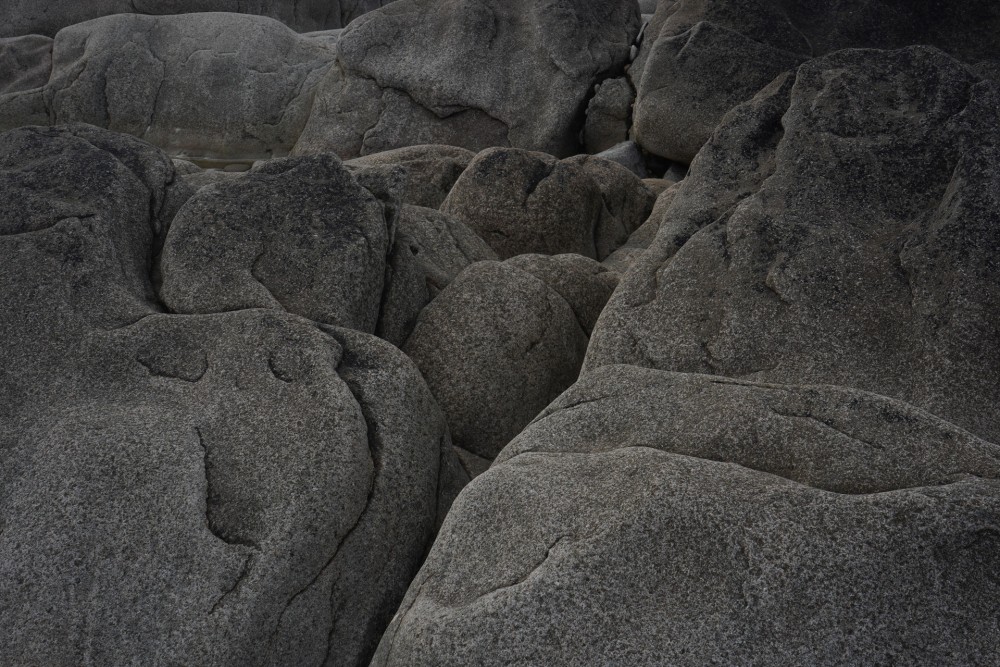
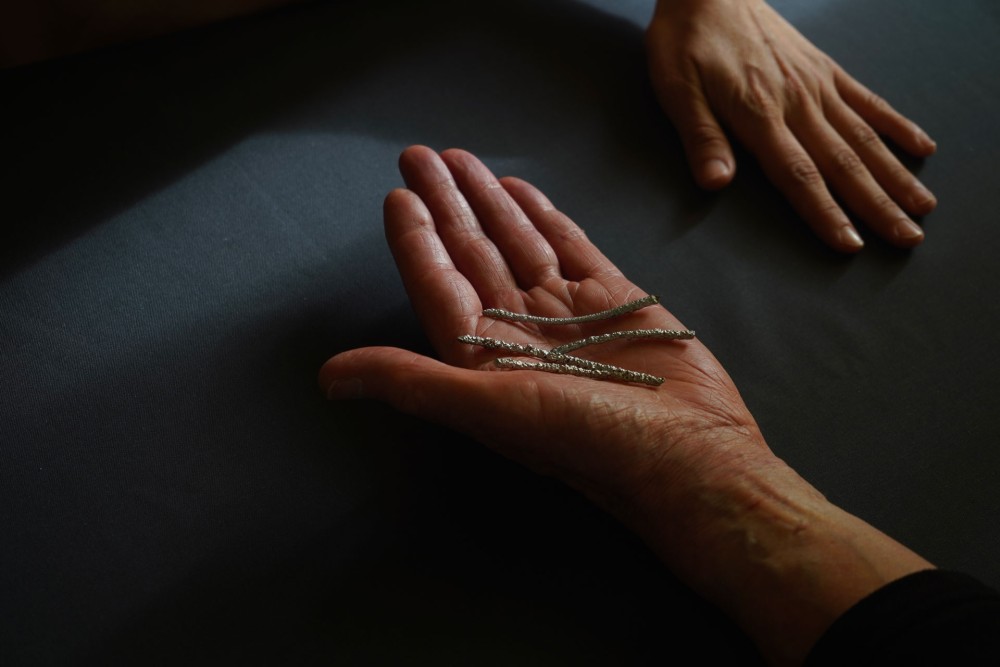
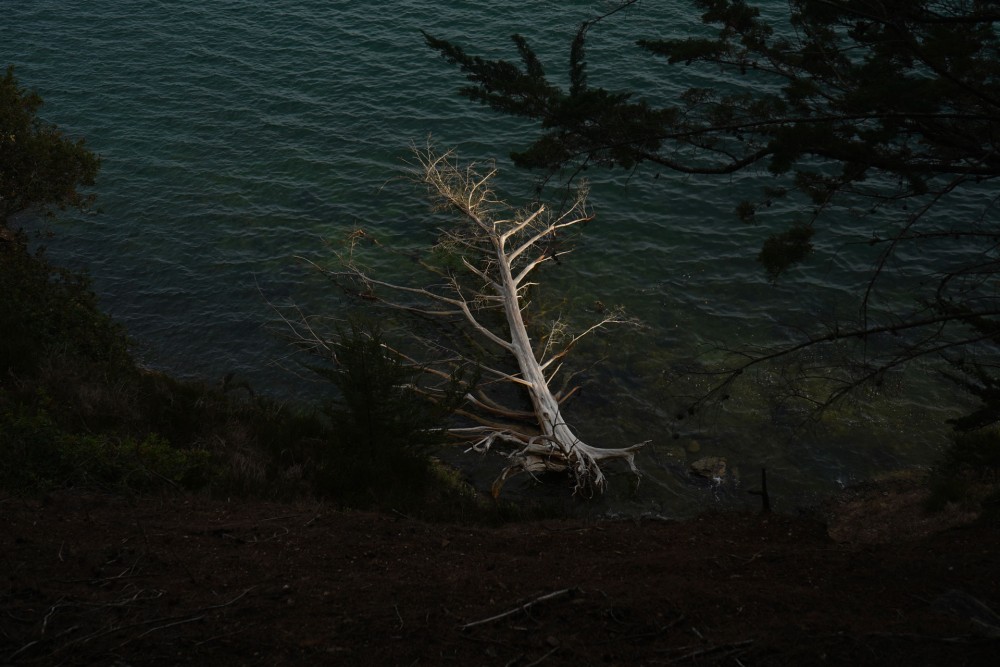
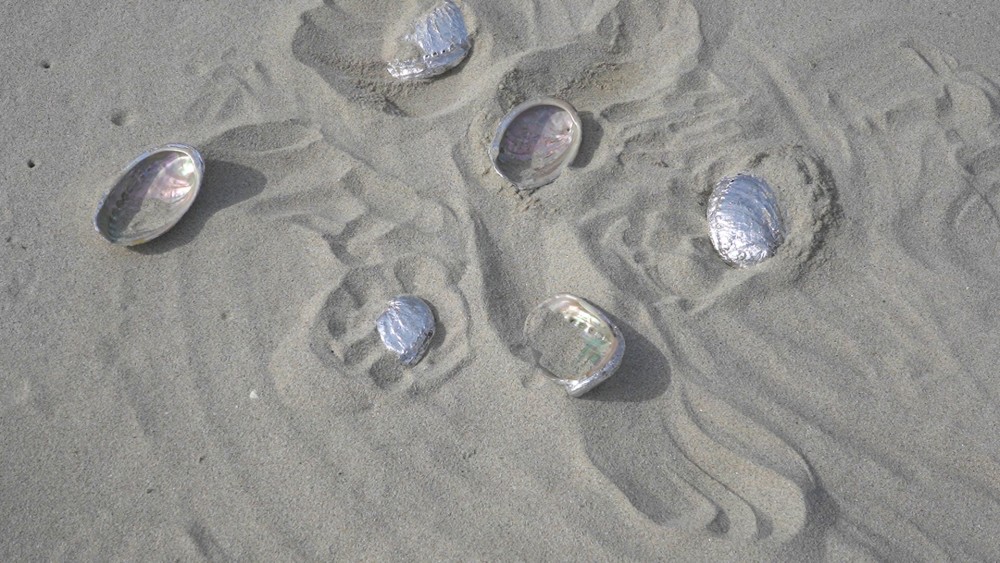
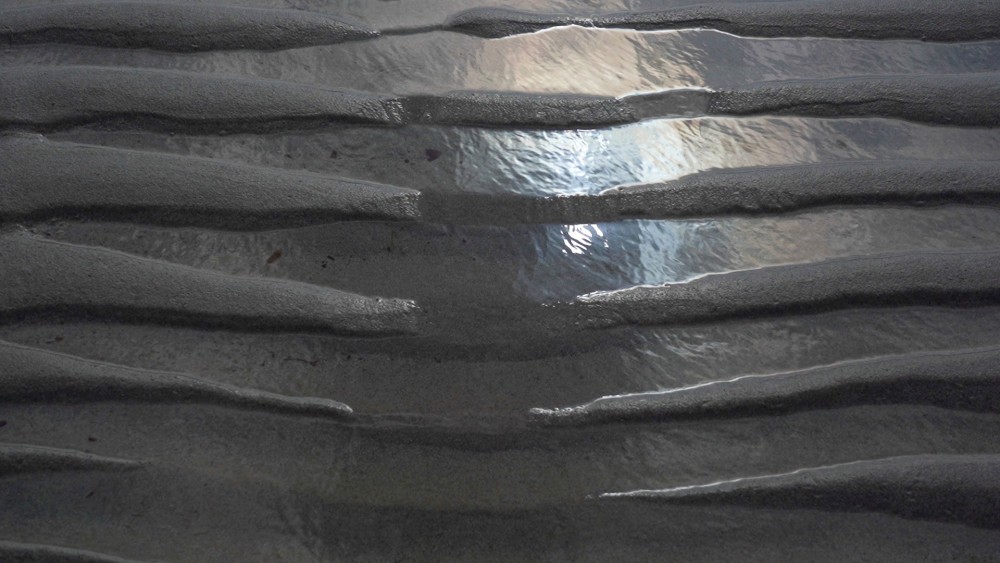
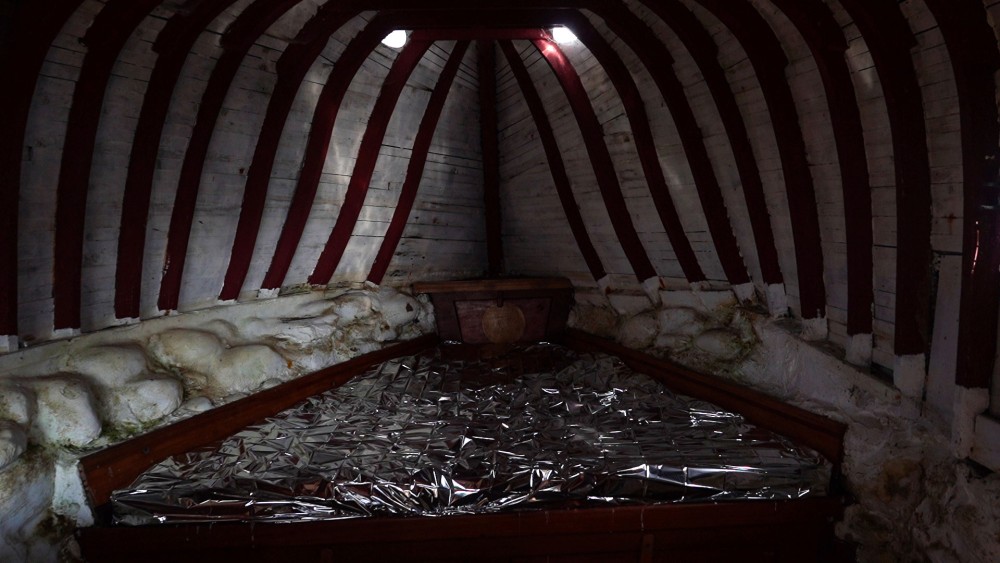
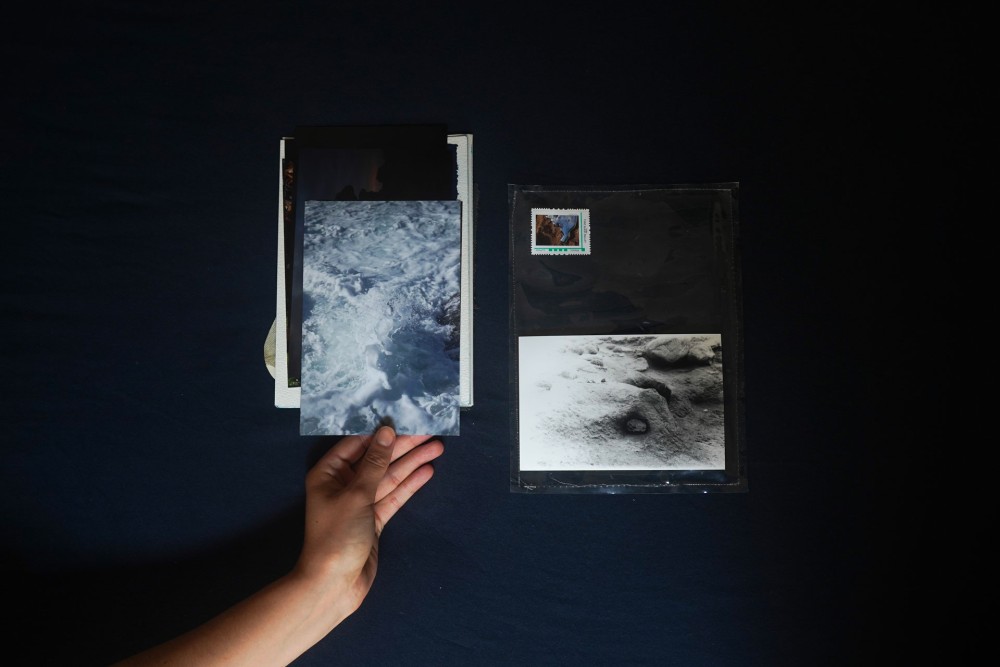
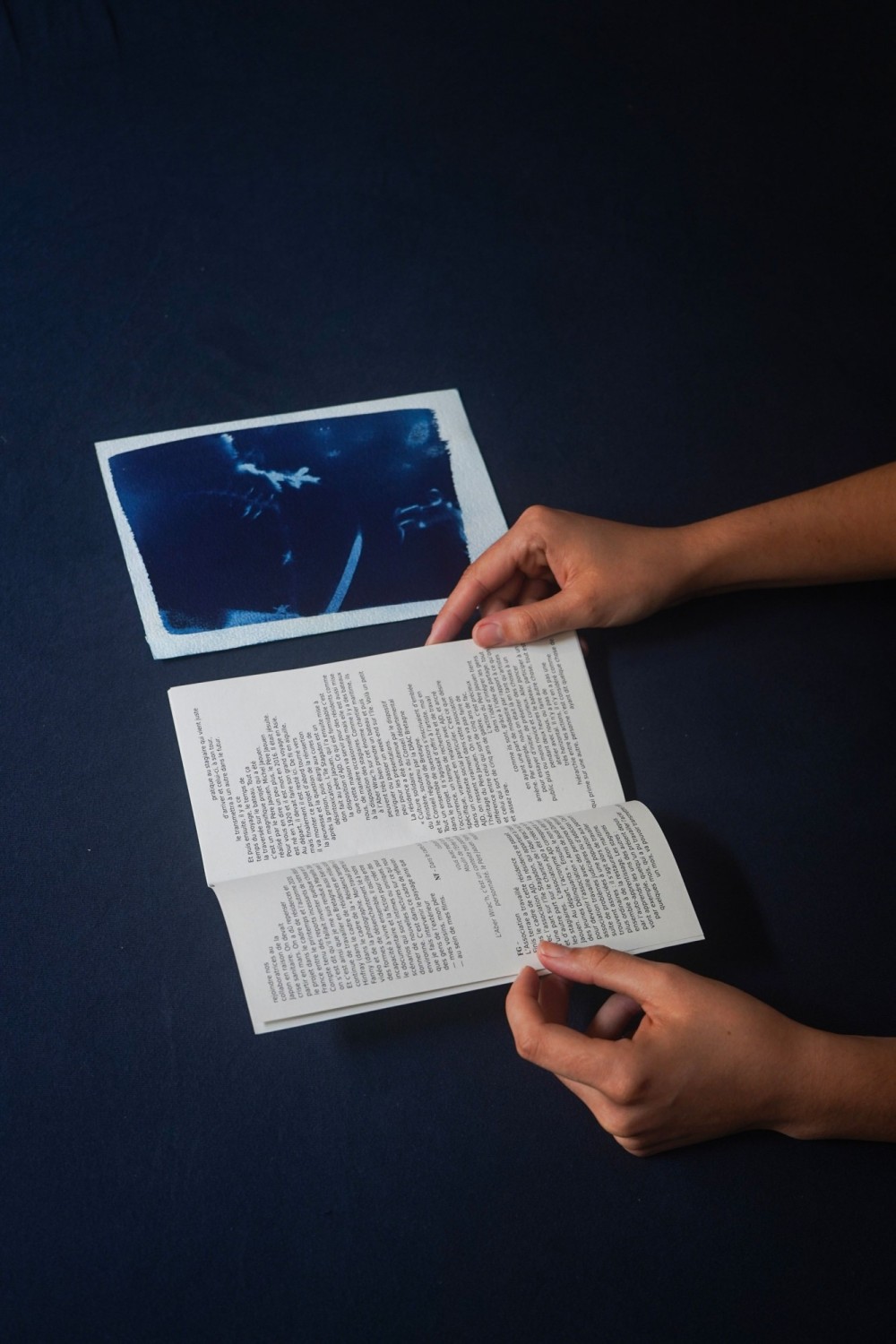
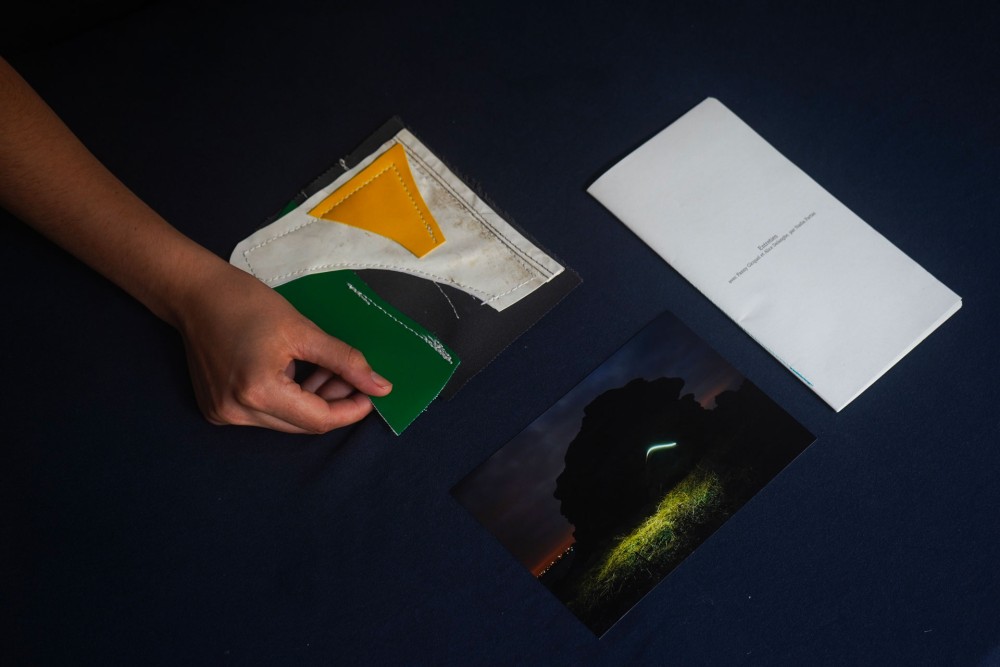
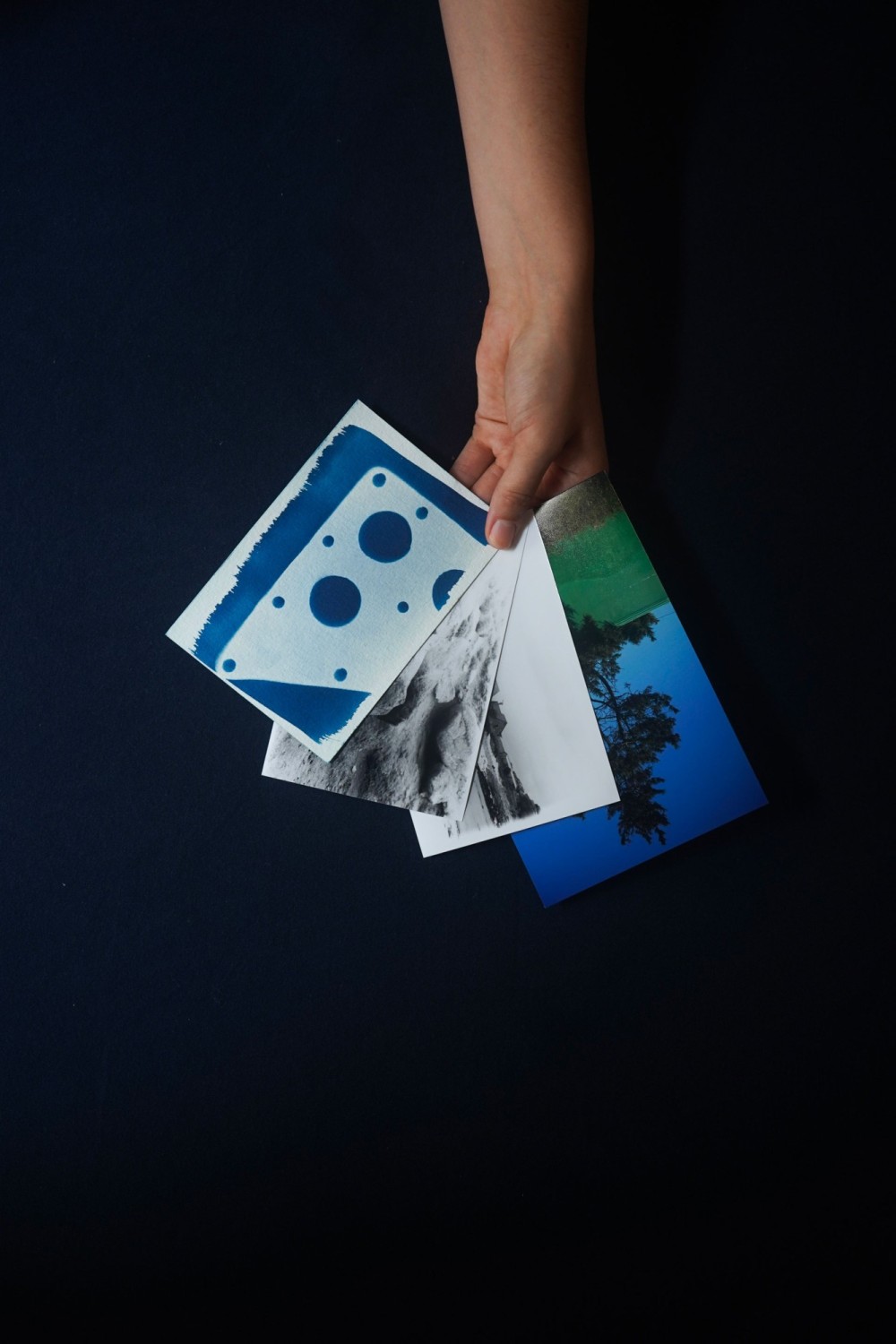
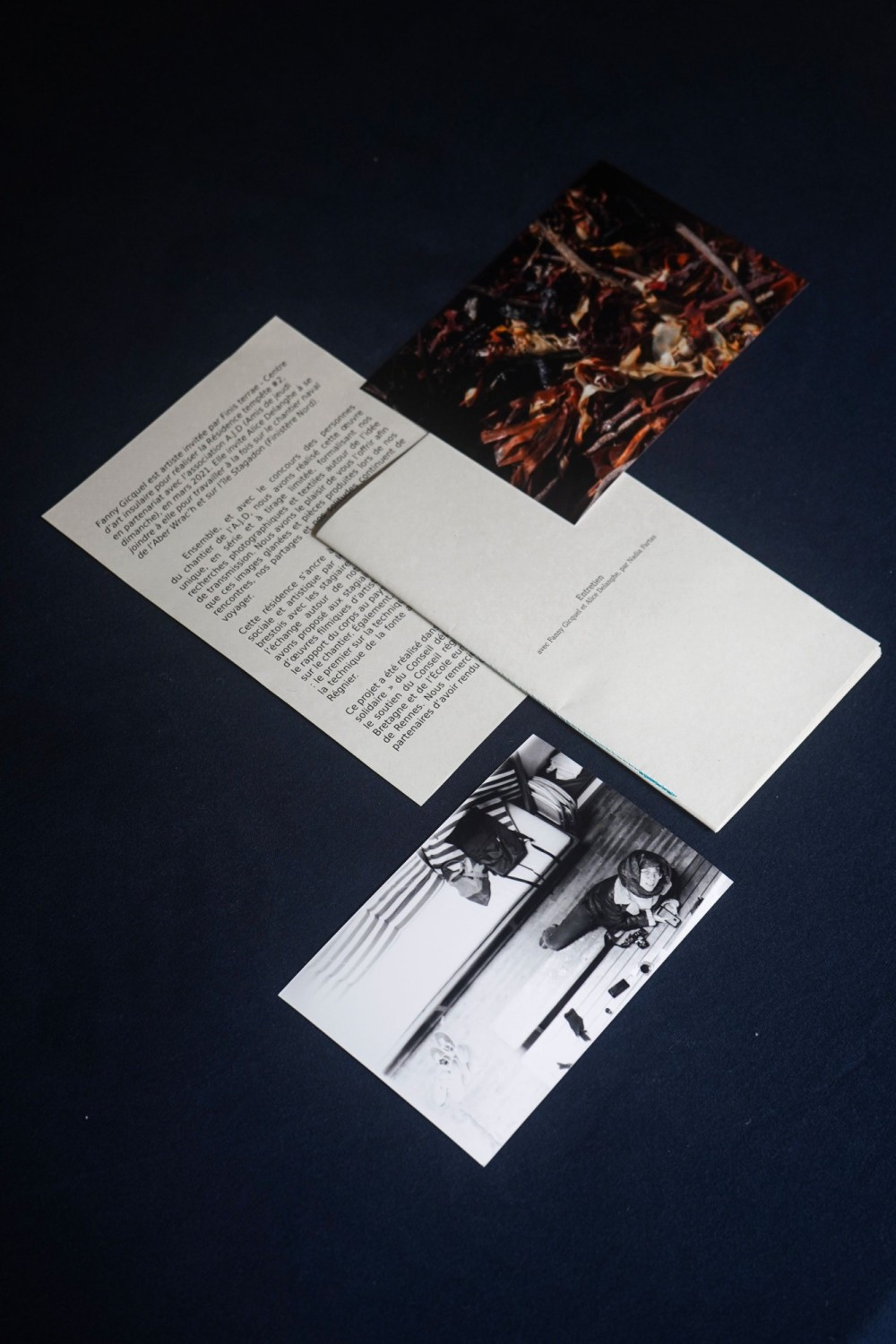
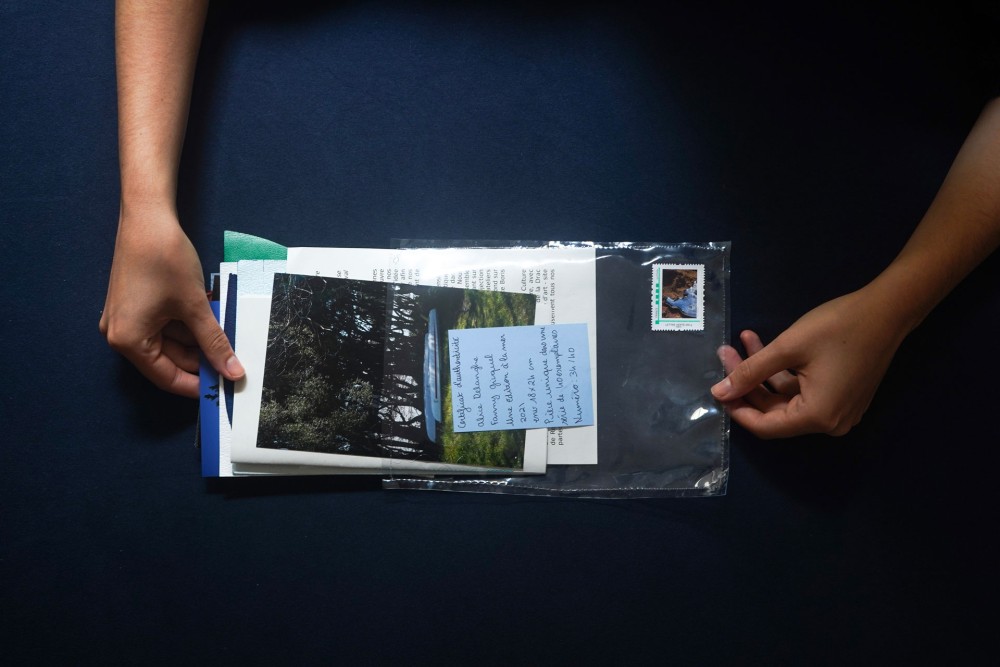
*A residency that shifts the perspective
in an isolated territory battered by winds and swells.













Fanny Gicquel is an artist invited by Finis Terrae – Centre d’art insulaire to carry out the Résidence tempête #2, in partnership with the A.J.D (Amis de jeudi dimanche) association, in March 2021. She invites Alice Delanghe to join her in working both on the shipyard at Aber Wrac’h and on Stagadon Island (North Finistère).
Together, and with the help of the people from the A.J.D shipyard, we produced a limited edition series formalizing our photographic and textile research around the idea of transmission. The edition also includes an interview with researcher Nadia Fartas, with whom we discuss the project, daily life in this maritime context, as well as the life of a young artist. In order for these collected images and pieces produced during our encounters, exchanges, and moments of solitude to continue traveling, we offered them to various people across France.
This residency is rooted both in a social and artistic dimension, through visits to Brest’s artistic spaces with the shipyard trainees, and in the exchange around our creation project. We invited the trainees to discover a collection of film works by contemporary artists, focusing on the relationship between the body and the landscape, during a screening on the shipyard. We also initiated two workshops: the first on cyanotype technique, and the second on casting technique with our friend and artist Boris Régnier.
On Stagadon Island, we created a collaborative video titled “Have You Ever Seen the Heart of a Rock Beat?”. This triptych video is mostly set in the outdoor landscape. The work questions the concept of transmission through gesture, movement, and dialogue with natural elements. The images, displayed side by side, contain patterns and spaces in dialogue, offering the possibility of a dual interpretation as well as a shift between them. This mysterious and poetic scenario is accompanied by an anonymous poem found hanging in a tree during one of their walks. Translated into several languages, it strengthens our inquiry: What is transmission and how is it done?
Finally, Alice made the documentary “Démerdons-nous pour être heureux”, a tribute to Michel Jaouen. This documentary gathers fragments of our experience within this community.
Excerpt from the interview with Fanny Gicquel & Alice Delanghe by Nadia Fartas, June 2021
N.F.: Does this mean that the medium, the technique, are these elements that partly determine the project? In a way, they already imply a certain type of human relationship, and you intentionally chose them for this reason.
F.G.: It was very important for us that they could leave with the object that very evening, as a souvenir, a presence of the shared moment. Our introductory workshops mainly focus on the notion of imprint, whether with cyanotype technique or casting. An imprint is the form, the mark made or printed in the material. In this context, the imprint is the gesture, the presence that connects the trainees to the project and to the time spent together. In a direct way, these mediums were therefore related to the human.
N.F.: … “to the human,” that is to say, to rephrase what you just said, these mediums didn’t immediately force people to display qualities. It allowed you to avoid putting people in front of the idea of “incompetence.”
F.G.: Exactly, it was essential that the trainees didn’t feel illegitimate and didn’t compare themselves to each other. We also considered the time factor in order to give everyone the chance to participate. If they want to come for five minutes, they can make a cyanotype or a casting object in that very short time. If they want to stay two hours and make twenty, they can also.
If we had told the trainees that each session lasted three hours, we might have had fewer people. For example, when someone started sanding something, they were fully engaged; they couldn’t leave because it would slow down their colleagues. They had a real responsibility towards the collective project.
N.F.: You’ve already partly stated feelings that are representative of this working moment. Did you have specific expectations at the beginning? Do certain feelings seem more appropriate than others to express the essence of this residency? Fanny, you’ve already said a little about this.
F.G.: Our shared expectation was to be up to the task, legitimate, and confident, in order to successfully carry out this residency, especially when we would collaborate with the trainees at Aber Wrac’h. For me, the expectation was really about this.
A.D.: As soon as Fanny told me about it, I really wanted to share this experience with her. I wanted to discover the incredible place of the Aber Wrac’h shipyard, a community place. I knew that interesting things were happening there, and when Fanny spoke about it, it was a great joy. Expectations… expectations… I have more to say about feelings.
F.G.: It’s not easy to answer this question because we always kept in mind that we had to be flexible and reactive, ready for the unexpected, both in terms of the project and the encounters. This attitude breaks expectations and preconceived ideas. We felt more excitement, impatience. For me, what mattered was that everything went well in the encounter, that the context allowed everyone to feel at ease. If we can talk about expectations, then they were pragmatic: having enough wood on the island, for example, not being too cold. The overall feeling I take away from it is an intensity of experience. I didn’t think it would affect me as much, both personally and professionally. And then, there were strong contrasts in the work: first we were with a lot of people, then we found ourselves alone on the island. The landscapes are emotionally powerful. We also spoke about a great serenity on the island, even in the space of the Aber, because it is a very calm space: there can be storms offshore, and we don’t feel them on our side. You can clearly see the changing tides, and at the same time, we are entirely protected. It’s a beautiful place, sublime, with wild, uncontrollable nature. It somewhat resembles the people there; nature is a bit untamable. Alice used this word, and I thought it was very accurate.
A.D.: What you say about the similarities between the nature and the people we met is true. I’d like to add something about mutual aid: whether it’s between people on the shipyard or between you and me. I think about life on the island and all our daily actions—they were collaborations in themselves, and each action had its story. It was powerful to realize, both of us, all these things that can be shared in daily life, and that I loved doing, simply: fetching water, as you mentioned earlier, lighting the fire… That really left an impression on me. And what’s important to note is that sometimes there were things to adjust on-site, day by day, because not everything went exactly as planned. Having too many expectations or over-planning things can easily lead to disappointment. When I have a fixed idea in my head and I can’t produce what I imagined, it’s frustrating in the moment, but in fact, it’s not that important; it’s just the unexpected, and you have to let go.
“Démerdons-nous pour être heureux”
Link to the video
“Démerdons-nous pour être heureux” is a tribute to Michel Jaouen: in 1951, he founded the association Amis de Jeudi Dimanche (A.J.D), aiming to bring together people in reintegration and others with more ordinary backgrounds for a six-month training program in boat restoration, construction, and navigation. In March 2021, artists Fanny Gicquel and Alice Delanghe went to the A.J.D shipyard in Aber Wrac’h, North Finistère, as part of Résidence tempête #2, coordinated by Finis Terrae – Centre d’art insulaire and A.J.D. This documentary brings together fragments of the two artists’ experiences within this community.
“Démerdons-nous pour être heureux”, video 8’30 min, 2021
Production: Finis Terrae – Centre d’art insulaire
Direction: Alice Delanghe, with the collaboration of Fanny Gicquel
In partnership with A.J.D – Amis du jeudi dimanche
As part of the “Culture solidaire” initiative of the Finistère Department Council
With the support of the Regional Directorate for Cultural Affairs (DRAC) of Brittany and the Regional Council of Brittany
As part of Résidence tempête #2, a program carried out in partnership with the A.J.D association (Amis de jeudi dimanche).
This project was developed as part of the “Culture solidaire” initiative of the Finistère Department Council, with support from the Regional Council of Brittany, DRAC Bretagne, and the European School of Art – Rennes campus. We warmly thank all our partners for making this possible.